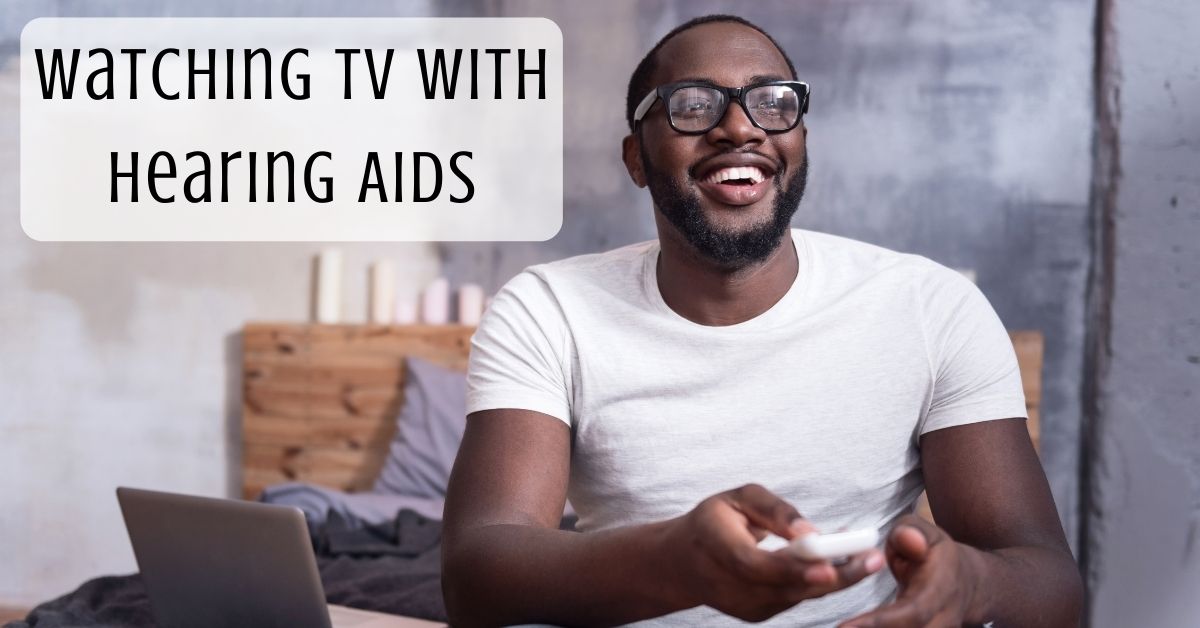- Working with Hearing Loss - May 26, 2023
- Earbud Use Could Harm Your Hearing - May 19, 2023
- Why Pretending to Hear Doesn’t Help - May 2, 2023
Hearing aids are the most common treatment for hearing loss, the third most pervasive medical condition that older adults experience. These electronic devices are designed to absorb, amplify, and process sound which significantly increase a person’s hearing ability.
Navigating hearing loss and using hearing aids requires making adjustments while engaging in daily activities and performing tasks. Integrating a new instrument and retraining your hearing takes time and patience! By learning all about your hearing aids and exploring their settings, you can maximize the quality of your hearing while engaging in a range of activities including watching tv.
Understanding Hearing Aids
There are several types of hearing aids in addition to numerous brands, styles, and models. But all hearing aids consist of the following basic components:
- Microphone: picks up the soundwaves in the environment you are in and converts these soundwaves into electrical signals.
- Amplifier: amplifies the electrical signals and in hearing aids that are more advanced, the amplifier can alter these signals to meet a person’s hearing preferences.
- Receiver: also known as the speaker, works to convert electrical signals back into soundwaves that are then sent to the inner ear.
All hearing aids also have a power supply (batteries) that allows them to operate. Additionally, there are two main types of hearing aids:
- In the Ear (ITE): these hearing aids are worn in the ear and typically involves taking a custom mold of your ear so that the device fits well.
- Behind the Ear (BTE): are worn behind or on top of the outside portion of the ear. These hearing aids are connected (through a small tube) to an ear piece that sits in the ear canal.
Certain types of hearing aids work more effectively for specific types of hearing loss. So, your hearing aids depend on various factors: lifestyle, hearing needs, preferences etc.
Tips for Watching TV
Innovations in technology and digital processing have significantly improved hearing aids. Like most electronics today, hearing aids are more complex and savvier than ever before. You can access enhanced features to do daily activities, like watching tv, with greater ease and comfortability. A few ways to do this include:
- Program the Right Settings
Hearing aids can be programmed to adjust to your individual hearing needs in various environments. You can actually program settings that are specific for watching television. When you get your hearing aids you typically work with a hearing healthcare specialist to establish the settings that work best for you. These settings can include noise cancellation features which reduce background noise. This sharpens sound quality, allowing you to hear what you are watching more clearly. - Use Wireless Connectivity
Most hearing aids feature Bluetooth technology. This allows your hearing aids to wirelessly connect to other electronic devices including your tv. Bluetooth technology allows hearing aids to stream audio directly which is activated simply by pressing a button. Pairing your hearing aids and tv sharpens sound quality, drastically improving the experience of watching tv. - Apply Closed Captions
Closed captions refer to a transcription of the audio to text which appears on the screen as you are watching the program. This is really useful for your hearing because it allows you to read what is being said, making it easier to follow along. Closed captions are a great addition to the support of hearing aids; used together you can watch and listen more comfortably. Your television as well as streaming platforms offer the closed captions feature which simply has to be turned on!
Hearing aids are such an important investment in your hearing health. Taking the time to learn how to best use your hearing aids and exploring the settings that are available to you can drastically improve your listening experience.
By understanding basic functions and becoming comfortable with your device, you can maximize your hearing while navigating various environments. Hearing aids can be well integrated into daily life, allowing you to do even the most basic things like watching tv, with greater ease.

